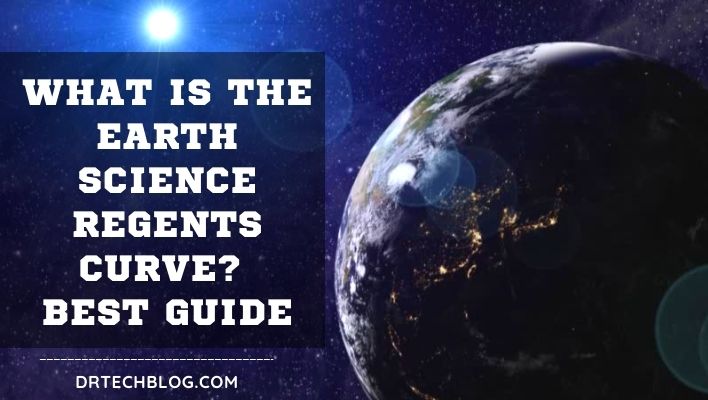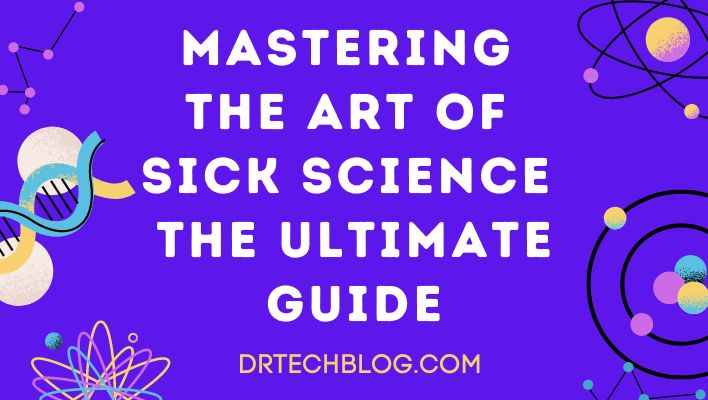Introduction to the Earth Science Regents Exam
Welcome to the fascinating world of Earth Science Regents exams! Whether you’re a student gearing up for this challenging test or someone curious about how it all works, we’ve got you covered. In this blog post, we’ll dive into the ins and outs of the infamous Earth Science Regents curve – that mysterious grading system that has both students and teachers on edge. So grab your compass and get ready to navigate through the twists and turns of understanding just what exactly is going on with this curve.
But first, let’s take a moment to appreciate what Earth Science is all about. Picture yourself exploring the wonders of our planet: studying rocks, analyzing weather patterns, unraveling geological mysteries – it’s like being an investigator in Mother Nature’s own detective agency! Now imagine channeling all that knowledge into one epic exam designed to challenge you intellectually while allowing you to showcase your scientific prowess. That’s where the Earth Science Regents Exam comes in!
So buckle up as we embark on this journey together. We’ll demystify the scoring system behind the curve, debunk common misconceptions surrounding its existence, provide tips for navigating it successfully, give real-life examples of how it affects scores (yes, you read that right), emphasize why preparation goes beyond relying solely on the curve itself – because at the end of it all, remember: It’s more than just a number! Let’s dive right in and discover everything there is to know about Earth Science Regents Curve – your ultimate guide awaits!
Understanding the Scoring System and Curve
When it comes to the Earth Science Regents Exam, understanding the scoring system and curve is crucial for success. The scoring system takes into account both the number of questions answered correctly and the difficulty level of those questions. This means that even if you answer fewer questions correctly, but they are more difficult ones, you can still earn a higher score.
The curve is an additional factor that impacts your final score. It adjusts scores based on the overall performance of all test-takers. If the majority of students perform well on a particular question, it may be deemed easier than anticipated, resulting in a lower curve adjustment. On the other hand, if most students struggle with a question, it may be seen as more challenging and result in a higher curve adjustment.
It’s important to understand that the curve is not something to rely solely upon or hope will magically boost your score. Instead, think of it as an opportunity to improve your standing compared to other test-takers.
To navigate the curve effectively and maximize your score, focus on mastering key concepts rather than simply memorizing facts. Understanding how different topics connect and being able to apply knowledge in real-world scenarios will give you an advantage.
Practice exams can help familiarize yourself with typical test formats and ensure you’re comfortable managing time constraints while answering questions accurately. Additionally, seeking guidance from teachers or tutors who specialize in Earth Science Regents preparation can provide invaluable insights and strategies.
Remember that each year’s exam may have slight variations in difficulty level or content areas emphasized. So make sure to stay updated with any changes by reviewing past exams or consulting reliable study resources aligned with current curriculum standards.
In conclusion (just kidding!), understanding the scoring system and curve for Earth Science Regents is essential for achieving your desired outcome on this high-stakes exam! By focusing on comprehensive concept mastery, strategic practice sessions, and staying informed about any changes, the journey toward success becomes smoother.
Myth vs Reality: Debunking Common Misconceptions about the Curve
When it comes to the Earth Science Regents Exam, there are many myths and misconceptions surrounding the curve. Let’s take a closer look at some of these and separate fact from fiction.
1. Myth: The curve is just an easy way to boost your score without studying.
Reality: While the curve does have an impact on your overall score, it should never be relied upon as a crutch. Studying and preparing for the exam is crucial for success. The curve simply takes into account how well other students performed on the same test.
2. Myth: The curve always benefits everyone equally.
Reality: This is not true. The extent to which the curve affects your score depends on various factors, such as how well you perform relative to other students and how difficult or easy that particular exam was.
3. Myth: A high raw score guarantees a high curved score.
Reality: Your raw score (the number of questions answered correctly) does play a role in determining your final grade, but it is not solely responsible for it. Other factors like difficulty levels of certain questions and the performance of other test-takers also come into play.
4. Myth: You can predict exactly how much your score will increase due to the curve.
Reality: Unfortunately, this isn’t possible since each exam varies in difficulty level and student performance differs from year to year.
It’s important not to rely solely on assumptions or rumors when understanding how the Earth Science Regents Curve works. By busting these common misconceptions, you can better prepare yourself for what lies ahead in this challenging examination process!
Tips for Navigating the Curve and Maximizing Your Score
When it comes to the Earth Science Regents exam, understanding how the scoring system and curve work can make a significant difference in your final score. Here are some tips for navigating the curve and maximizing your score.
It’s important to familiarize yourself with the content and format of the exam. This will help you identify areas where you may need additional study or practice. Make sure to review all topics covered in the curriculum and use resources such as textbooks, online tutorials, and practice exams to reinforce your knowledge.
Next, develop a study plan that allows for consistent review over an extended period. Cramming at the last minute rarely leads to success on standardized tests like this one. Instead, aim for regular study sessions spread out over several weeks or months leading up to the exam date.
During your study sessions, focus on mastering key concepts rather than simply memorizing information. Understanding how different topics connect and apply to real-world scenarios will not only improve your performance on test day but also deepen your overall understanding of Earth science.
Practice answering past Regent’s questions under timed conditions to simulate the actual testing environment. Pay attention not only to getting correct answers but also practicing effective time management skills during each section of the exam.
Don’t underestimate the power of self-care during this stressful period. Get enough sleep, eat well-balanced meals, exercise regularly, and take breaks when needed. A healthy mind and body will enhance your ability to retain information and perform at your best come test day.
By following these tips for navigating the curve and maximizing your score on the Earth Science Regents Exam, you’ll be better equipped to tackle any challenges that come your way! So start preparing early, stay focused throughout every step of the studying process, and remember -your efforts will pay off!
Real-Life Examples of How the Curve Affects Scores
The Earth Science Regents Exam can be quite challenging, and many students wonder how the curve will impact their final score. Let’s take a look at some real-life examples to understand how the curve works.
Example 1: Sarah and John both scored an 80% on the exam. However, due to the curve, Sarah’s score was boosted to 85%, while John’s remained unchanged. This shows that even if two students achieve the same raw score, their curved scores may differ.
Example 2: Emily struggled with certain topics and only managed to get 65%. With the help of the curve, her score was increased to a passing grade of 70%. The curve provided Emily with an opportunity to pass despite her initial difficulties.
Example 3: Michael worked hard and obtained a remarkable raw score of 95%. Thanks to his exceptional performance, his curved score reached an impressive 100%. This example highlights how high-achieving students can benefit from the curve as well.
These real-life examples demonstrate that understanding how the curve affects scores is crucial for gauging your performance accurately. It’s important not just to focus on achieving a specific raw score but also to consider how it will be adjusted through curving. So remember, whether you’re aiming for improvement or worried about falling short – keep in mind that your actual score might differ after taking into account this influential factor.
The Importance of Preparing for the Earth Science Regents Beyond the Curve
Scoring well on the Earth Science Regents Exam is undoubtedly important, but there’s more to it than just understanding how the curve works. To truly excel in this challenging exam, preparation is key.
First and foremost, studying diligently will help you develop a strong foundation of knowledge. This means reviewing all relevant topics, from plate tectonics to weather patterns. By building a solid understanding of these concepts, you’ll be better equipped to answer questions accurately and confidently.
Additionally, practicing past exams can greatly enhance your performance. This allows you to familiarize yourself with the format and style of questions that are typically asked. It also helps identify any areas where you may need additional study or clarification.
Beyond content review and practice exams, time management skills are crucial for success on the Earth Science Regents Exam. With limited time available during the test, being able to efficiently allocate your efforts across different sections is essential. Practicing timed mock exams can help refine your ability to work quickly while maintaining accuracy.
Leveraging additional resources such as textbooks or online materials can provide valuable supplemental information. Exploring different sources allows for a deeper understanding of complex topics and provides alternative explanations that may resonate with individual learning styles.
Remember that preparing for the Earth Science Regents Exam goes beyond relying solely on an anticipated curve outcome. While understanding how scoring works can help manage expectations, it shouldn’t overshadow comprehensive preparation efforts focused on content mastery and effective exam strategies.
So go ahead – embrace this opportunity! Invest time into thorough study sessions; challenge yourself with practice tests; master time management techniques; explore diverse resources – because when it comes down to it, achieving success on the Earth Science Regents Exam requires dedication and proactive preparation beyond what any curve could offer!
For more Visit: DrTechBlog




